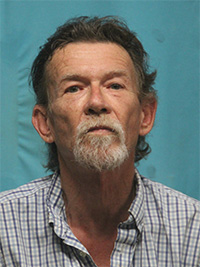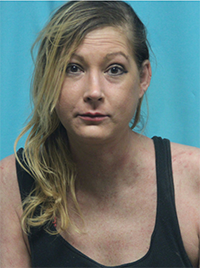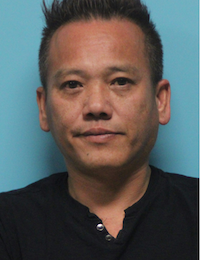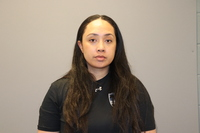Colleyville, Texas June 20, 2016
- This entry is part 4 of 6 in the series Proof of Death
Part 1 – How Messed Up is That?!
Part 2 – A Rose by any other Name
Part 3 – UNWANTED – Dead or Alive
Part 4 — Comfortably Numb
Bricks in the Wall is part 5 of 6 in the series Proof of Death by Dr. Kevin Wacasey, Colleyville Medical Clinic, Colleyville, Texas
In 1992, emergency physician Dr. James Keaney (under a pseudonym “The Phoenix”) wrote a seminal book entitled The Rape of Emergency Medicine.
In this semi-fictional work he described how the specialty of Emergency Medicine was born in the 1970’s, and how it quickly came under corporate control. Since ER’s had to be staffed with doctors 24 hours a day, 365 days a year, hospital administrators found that hiring staffing companies was a lot less hassle than trying to arrange physician coverage themselves.
Plus there was – and undoubtedly still is – the potential for financial gain for administrators with the power to award exclusive contracts using the old “you scratch my back…” way of doing things. So provide warm-blooded doctors these companies did – and at very handsome profits.
They still do so to this day; from the nationwide EmCare to Concord Medical Group in Texas, these so-called “contract management groups” make hundreds of millions by billing for and then collecting all of the physician’s fees, then turning around and paying the doctors an hourly wage.
Yes, you read that right. Throughout my 22 years of practicing the very specialized field of emergency medicine, I was paid an hourly wage. In fact, I couldn’t even tell you what I charged patients for my services; all of that information is kept from the doctors actually doing the work.
This business model creates an unavoidable conflict of interest – since physician salaries represent the biggest expense for these corporate staffing firms, it stands to reason that they would be inclined to hire the cheapest doctors possible. But emergency medicine is the front line of injury, infection, and illness, so one would think its practitioners should be highly trained specialists capable of dealing with the sickest patients imaginable. Right?
Well I hate to say it ain’t so, but it isn’t – and never has been. Just as Dr. Keaney pointed out in his book almost 25 years ago, virtually any doctor can still work in an ER – and during my career I’ve practiced alongside gynecologists, urologists, and surgeons, just to name a few. Even today, except in most major trauma centers and big city hospitals, a medical license and a heartbeat is often the sole requirement to call oneself an “ER doctor.”
In fact, at one of my last emergency medicine gigs a new physician was hired who was double-board certified in Internal Medicine and Pediatrics. And although she had over 20 years experience practicing medicine, her very first shift – ever – in an emergency room was in February, 2015. It didn’t take long for her to catch on though; after a weekend-long trauma course, a lecture on suturing wounds, and a video on how to splint fractures, she was good to go.
My point to all this is that in the world of corporate medicine, even I, a highly trained expert in emergency and trauma care, am replaceable. Verrrrry replaceable. As are all of the doctors who work in emergency rooms – all in all we’re just another brick in the wall. And if any of us dares to cross the corporate line and doesn’t protect the bottom line, well, you do the math…
Part 5 of Proof of Death
AFTER I got word on March 30, 2001 that the Fort Worth Police Department had dropped their investigation into Lettie McGhee’s death, I was stunned. Shocked. Beyond belief.
It was – literally – like I was living a nightmare.
The past few years had been surreal for me. A native of the Fort Worth area, I had lived my entire life in the Metroplex until I went to medical school in Galveston in 1990. Then I had moved across the country to an Emergency Medicine residency in Orlando, and after completing that three year program I couldn’t wait to get back home to DFW.
So in June of 1997 I packed up my fledgling family, drove almost 24 hours straight, and officially began my career.
There have been few bigger disappointments in my life.
My first position as a true-blue emergency physician was in a local hospital, with a small doctors group led by unscrupulous partners who were focused on protecting and exploiting their financial positions at the top of the heap. So toward the end of my initial two year “partnership track,”when I was told that I wasn’t partner material just yet and would have to work at least another year at a low salary, I split.
I moved to a neighboring hospital where another small group had held the ER doctor’s contract for 15 years. But the doctor at the top of that group was committing fraud by having the non-partner employee doctors pay his company’s payroll tax liability (it’s complicated) to the tune of thousands of dollars per year. The hospital CEO was also a principal of the billing company that was being paid over 17% of the group’s collections for it’s work – a kickback in violation of federal law. It didn’t take long for me to run afoul of the scheme, and after I complained about it I was “fired” from that hospital. As an aside – I turned around, sued the physicians group, and a few years later I won.
After these experiences I had had enough of the greedy shenanigans. This wasn’t what I had trained years for – to be kicked around like some can in the street, all in the name of money. I honestly have to laugh when I look back now, at how ridiculously naïve I could be. I was actually shattered at the thought that my fellow physicians would screw me over. Wake up, wake up Kev…
So in early 2000, when I heard of an opening for an attending physician position in the John Peter Smith (JPS) hospital emergency room I jumped on it.
As I mentioned before JPS is the county hospital for the Fort Worth area, and as such most of the patient population is indigent. So I thought it would be great to work for a government system focused on providing medical care to the poor, instead of stuffing its pockets off the backs of the doctors working for it. The job was also attractive because I would have the opportunity to work with and teach physician residents, doing their clinical rotations through the Emergency Room.
I applied, was interviewed, and then hired by the North Texas Affiliated Medical Group (NTAMG), the company who not only provided ER doctors, but had the exclusive right to provide all physician staffing to the JPS network. Corporate medicine at its finest, you could say, but after being robbed by two different “democratic” groups of local doctors, I didn’t think things could get much worse. The top NTAMG brass seemed excited to have me, and I felt like I had finally found a home, where I would be viewed as a valuable team member rather than a revenue generator.
Just like the New Kid in Town, at first I was treated very well, and I really enjoyed the work. But it didn’t take long before I saw some concerning quality issues.
In the emergency room we deal with a lot of heart attack victims, and I often get to know the staff Cardiologists well since I have to call upon them all the time. Yet JPS – at that time the third largest hospital in Tarrant County with an extremely busy ER – was stuck in the 70’s in regards to it’s ability to take care of heart cases. There were only two Cardiologists on staff for the entire network, but during the entire time I worked there I never met either of them. Which wasn’t all that surprising, since the hospital didn’t have a cardiac catheterization lab to treat heart attack victims. Instead, we used an outdated, clot-busting drug called streptokinase.
The JPS ER was (and still is) also a regional trauma center. Yet I was the only physician trained and board certified in Emergency Medicine; the majority of the other “ER doctors” were family practitioners, many of whom had completed their training through the JPS Family Medicine residency. It showed, too, and not just in the routine mismanagement of trauma victims. Once I took care of a patient who had been sent home two days earlier with a life threatening epiglottis infection – despite a radiologists’ report describing it to the original ER doc who had ordered the X-rays – yet had come back to the hospital because he couldn’t breathe. I remember an AIDS patient with a kidney infection who had been seen and discharged with a prescription for nausea medicine but no antibiotics, and was near death when he returned and I saw him.
As time wore on, my experiences in that environment went from frustrating to unsettling to exasperating. Despite its size and the number of patients coming through its doors, JPS wasn’t at all like Orlando Regional Medical Center, the trauma hospital where I had done my residency. It was more like I had stepped right through Alice’s looking glass. And since I’ve never been one to hold things in, let’s just say I became a little brazen, even outspoken about the quality of care I was witnessing.
Things really came to a head on October 3, 2000 when I was on duty and a comatose motorcycle accident victim was brought in by ambulance. Because of the mechanism of injury and the patient’s condition, the hospital’s trauma protocol was activated. But the attending, or supervising trauma surgeon never showed up during the patient’s ER stay (which was very common then despite being against hospital rules), so I was the only attending – also translated as legally liable – doctor on hand.
Nevertheless, things went smoothly until the junior surgical resident ordered an inappropriate medication to paralyze the patient so an airway tube could be placed, and I objected. I told the resident that another, safer drug should always be used in patients with potential head injuries. He looked me straight in the eye, said “I know”, and ordered the nurse to give the dangerous drug anyway.
Now I would have never dreamed of disobeying one of my attendings during my training, even had I known they were wrong at the time. But hey! This was JPS, and things there were just…different. So I kept my cool and didn’t cause a scene, but to protect myself I did write a note in the patient’s chart detailing everything that had occurred. As it turned out, the patient did fine, but two days later I was called to the office to get a spanking.
I walked in to the conference room and sat in a chair facing the NTAMG leadership – including the non-physician “CEO” – who were all circled around me. I felt like I was on trial, and for good reason.
Because I was.
The meeting was led by Dr. Ralph Anderson, a Gynecologist who was the President of NTAMG at the time. He started the proceeding by handing me a letter that outlined several “very serious charges” I stood accused of: I wasn’t seeing patients quickly enough, and I wasn’t supervising the resident physicians. Of course, for good measure the old stand-by was thrown in too, the impossible-to-disprove sexual harassment allegation:
“Several female staff members have reported that you have suggested or requested social or personal contact with them. Although mutually agreeable social contact between staff is not prohibited, the repeated solicitation of such contact with multiple staff of the opposite sex can be interpreted as creating an uncomfortable work environment. Performance Expectation: Refrain from suggestions of social or personal contact, unless it is in the context of a group event or such suggestion has been initiated by the other party.”
In other words, no more dirty jokes.
But the meat of the matter involved the run-in I had had with the surgery resident, and the (in)appropriateness of my chart documentation:
“A review of medical records reveals several instances in which you have documented information that is not of a medical nature, and is not appropriate to include in a medical record. Performance Expectation: All records should reflect the evaluation and management of the patient’s medical condition. Comments on staff or emergency room procedures should not be included in the medical record.”
Ahh, I thought. Now we get to it, the real reason I’m here. Even at that point though I still believed in the power of reason, so I detailed the facts of the case and told them my play by play. I agreed that yes, it may be risky to make comments in a chart about what should never have happened in the first place, but isn’t it far more dangerous to let resident doctors still in training have the power to override an attending physician’s decision? Especially in the rapid, life-or-death environment of a critically injured patient?
They collectively blinked, nodded their heads in agreement and quickly said that that situation had been handled already. Then they spent the next half hour telling me again – one by one – that I had to be careful what I wrote in patient’s charts. For the sake of the company.
Oh, and I should see patients faster, make sure to teach the residents something every once in a while, and stop playing grab ass with the nurses. Or I could face termination of my employment.
After the meeting was over I knew I was in the hot seat, so I toned down my criticism of the crappy care that was being delivered at JPS, and resolved to quietly do the best job I could. In the hopes that I could make some sort of a difference through my positive actions.
It didn’t take long though before I had to call upon Dr. Lydia Grotti.
Throughout my tenure I had dealt with her directly from time to time, and I can say that it was almost always an unpleasant experience.
Grotti was well known for being demeaning, difficult, and for refusing to accept sick patients who needed to go to the Intensive Care Unit. Many times she came up with reasons why patients didn’t “qualify” to be under her care, and once she had made up her mind those patients usually ended up in a less acute hospital unit instead. Her preferred method of diverting work was to bully: she bullied nurses, she bullied residents, and she even tried to bully us, the attending physician staff. Much of the time it worked; but not with me.
On December 16, 2000 I called Grotti with an extremely unstable ER patient that needed to go to the ICU. She refused, and told me that I first had to contact the Internal Medicine team because it was up to the Medicine resident on duty to determine if my patient was sick enough to go to the ICU. Never mind the fact that I, as an attending physician, had the authority to make that call on my own.
So I consulted the Medicine resident, and then bullied him into taking the patient to the ICU anyway. But afterward I decided to email Grotti, and ask her to provide me with a copy of written hospital policy that said a Medicine resident could override an ER attending. I also requested her list of the “indications for admission to the Intensive Care Unit at John Peter Smith Hospital.” She never replied.
But just 10 days later Grotti killed Lettie McGhee.
I wasn’t involved at all in that case, but I’ll never forget the next morning when I relieved Dr. Don McGraw, the doctor who had resuscitated Ms. McGhee. He told me “you’ll never believe what Grotti did last night.”
Believe it I did though, because it fit her behavior that I had seen and heard about countless times before. I still had faith in the system however, and when McGraw told me he had gone to our departmental director and informed him about what had happened I was relieved. Grotti had gone too far this time, and I was confident a full scale investigation would at least result in her being removed from the clinical setting.
Only, it didn’t.
In fact, as January 2001 came and went, Grotti still saw patients as the Chief of Intensive Care. Even into February, when rumors of a hospital investigation were swirling she continued on, unfettered. And when her formal Peer Review hearing was held in early March, I remember how nervous the ER staff who had been called to testify were. I felt for them, having to do something they never signed up for, but since they had helped take care of McGhee I knew they could tell the truth, the whole truth and nothing but to Grotti’s judges.
As I mentioned before a hospital Peer Review process is anything but a transparent affair, and so no one in the ER knew the exact outcome in the days after the hearing was over. Grotti had laid pretty low during the past few weeks, and hadn’t really been heard from, so some of us thought she might have just quietly been dismissed.
So on March 15th, when I saw a flyer on the Department of Emergency Medicine office bulletin board that announced the next monthly meeting, I was incensed. “Lydia Grotti, M.D.” it said, the Director of Critical Care Services at John Peter Smith Hospital, would be giving the ER staff physicians a talk on – the Care of the Dying Patient.
I remember shouting “they exonerated her!” in my brain as loudly as I could, and how the collective heads shook in shared dismay as the realization that Grotti had been slapped on the wrist for killing a patient swept through the ER. Everyone knew that the whole hospital investigation had just been a whitewash, a coverup.
Why, though? Why protect a killer physician who might bring embarrassment, if not liability, to your corporate endeavor? Well, at that point I really began to understand how ingrained the NTAMG and hospital administration were in keeping things just the way they were. But like most whistleblowers, I still had the Pollyanna idea that Right makes Might.
So I decided to turn the affair over to the Fort Worth Police.
I was well aware of the risks of my doing so; of the duality of the Tarrant County District Attorney’s role as criminal prosecutor yet hospital defense legal team. But I figured that if the hospital wouldn’t stop her, then law enforcement was the only thing that could.
But I also imagined that as long as I was turning in a rogue physician who was killing patients, then I would be safe. I didn’t want to be a hero, and I certainly wasn’t seeking any any kind of reward. I just wanted to stop a killer, but not at the cost of my livelihood.
Well in this world, Might still makes Right, and my ill-thought-out reversal of that maxim had exposed me to the ultimate potential professional fate.
So at the end of March when I was told by Detective Waters that Tim Curry, the Tarrant County District Attorney himself, had been briefed on but declined to prosecute Grotti for Lettie McGhee’s death my first thought was, “how could they let her get away with murder?”
But then other thoughts crowded in, too. I was not only astounded, confused, and enraged; I was panicked. Because now my job was on the line.
Because I knew that my name was now firmly in the hands of JPS administration and my NTAMG bosses – as a snitch.
Up Next Part 6 – The Sword and The Shield
Remember, It’s not the COSTS of healthcare that are outrageous…it’s the CHARGES.
















